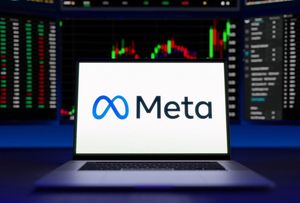Study Introduces New Innovation Curve, Revealing How Investment Philosophies Affect Decision-Making
Institutional investors representing more than $12 trillion in assets under managementi anticipate downward pressure on their ability to outperform against their return targets, according to the 2021 Fidelity Institutional Investor Innovation Study. While respondents nearly doubled their expected required rate of return, on average, in 2020 (12.3% actual compared to 6.3% required), only 54% said they are confidentii they will achieve their expected target rate of returniii over the next three years. Fidelity’s study also introduced a new framework called the Investment Innovators Curve to help institutions benchmark against their peers.
When institutional investors were asked about challenges they are experiencing, the top answer was yield generation, described as being forced to take on more risk for the same level of return (40%). Thirty-nine percent of institutional investors confirmed they are taking on more total risk in their portfolios than three years ago, and 37% revealed they are not comfortable with the total level of risk in their portfolios.
“This year’s study signals headwinds that have been putting pressure on firms to consider taking on more risk as they look for new sources of excess returns,” said Vadim Zlotnikov, president of Fidelity Asset Management Solutions and Fidelity Institutional Asset Management. “As we consider the impact of potential future macroeconomic changes, this is an opportunity for institutional investors to reevaluate their investment philosophies and decision-making processes.”
Investment Innovators Curve: New Framework Helps Institutions Benchmark Against Peers
For almost 20 years, Fidelity has been conducting primary research to understand decision-making among institutional investors, and this new research aims to help U.S. institutional investors benchmark portfolio and organizational performance against their peers. This year, respondents selected their placement in an innovation category, based on their organization’s ability and willingness to experiment with new investment approaches and asset classes.
The majority of institutional investors in the study placed themselves in the middle as either Early Majority (33%) or Late Majority (31%). However, an analysis of segments at the “tails” of this curve, made up of Innovators (5%) and Early Adopters (18%) at one end and Laggards (13%) at the other, demonstrates how widely investment and decision-making approaches can differ depending on an organization’s orientation around innovation, even among institutions of similar types and sizes. For more information on the segments, please see “About the Investment Innovators Curve” below.
Innovators/Early Adopters reported a more optimistic performance outlook when compared to Laggards with higher return targets (6.8% vs. 5.7%). Innovators/Early Adopters said they had a slightly higher actual rate of return in 2020 than Laggards (13.1% vs. 12.3%). When asked about challenges to their portfolios, Laggards were more likely to report concerns about yield generation (44% vs. 38% of Innovators/Early Adopters) and risk management (25% vs. 19%). Conversely, Innovators/Early Adopters were more likely to find it difficult to source differentiated investment ideas (28% vs. 21% of Laggards).
Innovators/Early Adopters appear to see more opportunity in tactical changes. The vast majority (93%) said they believe there may be value in short-term investment opportunities, compared to 70% of Laggards. While about the same number of Innovators/Early Adopters and Laggards said they are permitted to invest in short-term market opportunities (82% vs. 86%, respectively), Laggards were more likely to need formal approval to make tactical changes (43% vs. 27% of Innovators/Early Adopters) or use tolerance bands (52% vs. 38%). Innovators/Early Adopters were more likely to lean on asset managers with flexible mandates (42% vs. 27% of Laggards) or have asset class leads with discretion to make tactical adjustments when they saw fit (24% vs. 6%).
“There is no right or wrong approach to innovation, but by analyzing different investment philosophies, we hope to better understand and support the distinct needs and goals of institutional investors across the Investment Innovators Curve,” said Zlotnikov.
Asset Allocation: Investors at Either End of Curve Manage Portfolios Differently
Institutional investors in the study overall reported an asset allocation of 63.5% to active, 28.9% to traditional passive (e.g., cap weighted), and 7.6% to non-traditional passive (e.g., factors, non-cap weighted, "smart/strategic beta"). Respondents reported the following expected changes by 2025:
- Active: 31% expect to increase their allocations, 47% expect no change, and 22% expect to decrease. Half of Innovators/Early Adopters expect to increase.
- Traditional passive: 23% expect to increase their allocations, 54% expect no change, and 23% expect to decrease. Laggards were more likely to expect increases (29%).
- Non-traditional passive: 23% expect to increase their allocations, 69% expect no change, and 7% expect to decrease. One-third of Innovators/Early Adopters (33%) expect to increase.
Innovators/Early Adopters reported higher allocations to alternatives than Laggards (23% vs. 16%), while Laggards had more of a home country bias for U.S. equity (35% vs. 29% of Innovators/Early Adopters) and U.S. investment grade fixed income (21% vs. 17%).
Fidelity surveyed 500 institutional investors in the U.S. involved in their organizations’ decision-making processes and conducted interviews with 11 respondents.
For additional details on the survey, go to i.fidelity.com/innovation.
About the 2021 Fidelity Institutional Investor Innovation Study
The 2021 Fidelity Institutional Investor Innovation Study polled chief executive officers, chief investment officers, treasurers, and other investment executives at 500 institutions in the US. At the time of the survey, these institutions represented $12T (USD) in assets under management, across public sector defined benefit plans, corporate defined benefit plans, insurance companies, defined contribution plan sponsors, endowments and foundations, family offices, private banks, and sovereign wealth funds. Respondents were asked a range of questions about their portfolio objectives, market perspectives, asset allocation, investment philosophy, and investment process. Fidelity Asset Management Solutions (FAMS) conducted the survey from May 28 to July 26, 2021. The survey was executed in association with global research consultancy, CoreData Research. All respondents completed an online questionnaire, which was then supplemented by 11 in-depth qualitative interviews with survey respondents at pensions, as well as with endowments and foundations. Numbers may not total 100% due to rounding.
About the Investment Innovators Curve
Adapted from ideas in Diffusion of Innovations, by Everett Rogers (New York: Free Press, 5th Edition, 2003). Respondents selected their firm’s placement in one of the following categories:
- Innovators: “We are frequently one of the first to try a new asset class or investment approach, even if it’s extremely new and/or unproven.”
- Early Adopters: “We are not the first to try a new asset class or investment approach, but will quickly follow if we notice others are trying it.”
- Early Majority: “We are curious about new asset classes or investment approaches, but are more pragmatic. We’ll wait until it’s more common/established before investing.”
- Late Majority: “We adopt a new asset class or investment approach out of necessity. Once it’s mainstream and has clear, demonstrated value, we’ll invest in it.”
- Laggards: “We are very risk averse when adding new asset classes or investment approaches to our portfolio. We would rather be late to a new investing trend than bear the potential risks involved with new approaches.”
About Fidelity Investments
Fidelity’s mission is to inspire better futures and deliver better outcomes for the customers and businesses we serve. With assets under administration of $11.2 trillion, including discretionary assets of $4.3 trillion as of August 31, 2021, we focus on meeting the unique needs of a diverse set of customers: helping more than 38 million people invest their own life savings, 22,000 businesses manage employee benefit programs, as well as providing more than 13,500 wealth management firms and institutions with investment and technology solutions to drive growth. Privately held for 75 years, Fidelity employs more than 52,000 associates who are focused on the long-term success of our customers. For more information about Fidelity Investments, visit https://www.fidelity.com/about-fidelity/our-company.
Information provided in this document is for informational and educational purposes only. To the extent any investment information in this material is deemed to be a recommendation, it is not meant to be impartial investment advice or advice in a fiduciary capacity and is not intended to be used as a primary basis for you or your client’s investment decisions. Fidelity and its representatives may have a conflict of interest in the products or services mentioned in this material because they have a financial interest in them, and receive compensation, directly or indirectly, in connection with the management, distribution, and/or servicing of these products or services, including Fidelity funds, certain third-party funds and products, and certain investment services.
The content provided herein is general in nature and is for informational purposes only. This information is not individualized and is not intended to serve as the primary or sole basis for your decisions as there may be other factors you should consider. Fidelity Investments does not provide advice of any kind. You should conduct your own due diligence and analysis based on your specific needs.
Third party marks are the property of their respective owners; all other marks are the property of FMR LLC.
Diversification does not ensure a profit or guarantee against a loss.
Past performance is no guarantee of future results. An investment may be risky and may not be suitable for an investor's goals, objectives, and risk tolerance. Investors should be aware that an investment's value may be volatile and any investment involves the risk that you may lose money.
Fidelity Brokerage Services LLC, Member NYSE, SIPC, 900 Salem Street, Smithfield, RI 02917
National Financial Services LLC, Member NYSE, SIPC, 245 Summer Street, Boston, MA 02110
Fidelity Distributors Company LLC, 500 Salem Street, Smithfield, RI 02917
998411.1.0
© 2021 FMR LLC. All rights reserved.
i Respondents were asked, “What are the total assets of your primary investment portfolio (e.g., pension)? ($M)”, at the time the survey was taken from May 28 to July 26, 2021.ii Respondents were asked on a scale of 1-5, with 5 being “very confident”: “How confident are you that your portfolio will achieve its target return in the next 3 years?” 54% represents those who responded with 4 or 5.
iii Target or required rate of return is not an actual rate of return.
View source version on businesswire.com: https://www.businesswire.com/news/home/20211012005248/en/
Contacts
Corporate Communications
(617) 563-5800
fidelitycorporateaffairs@fmr.com
Caroline St. Angelo
(401) 292-3235
caroline.st.angelo@fmr.com
Follow us on Twitter @FidelityNews
Visit About Fidelity and our online newsroom
Subscribe to email alerts for news from Fidelity






